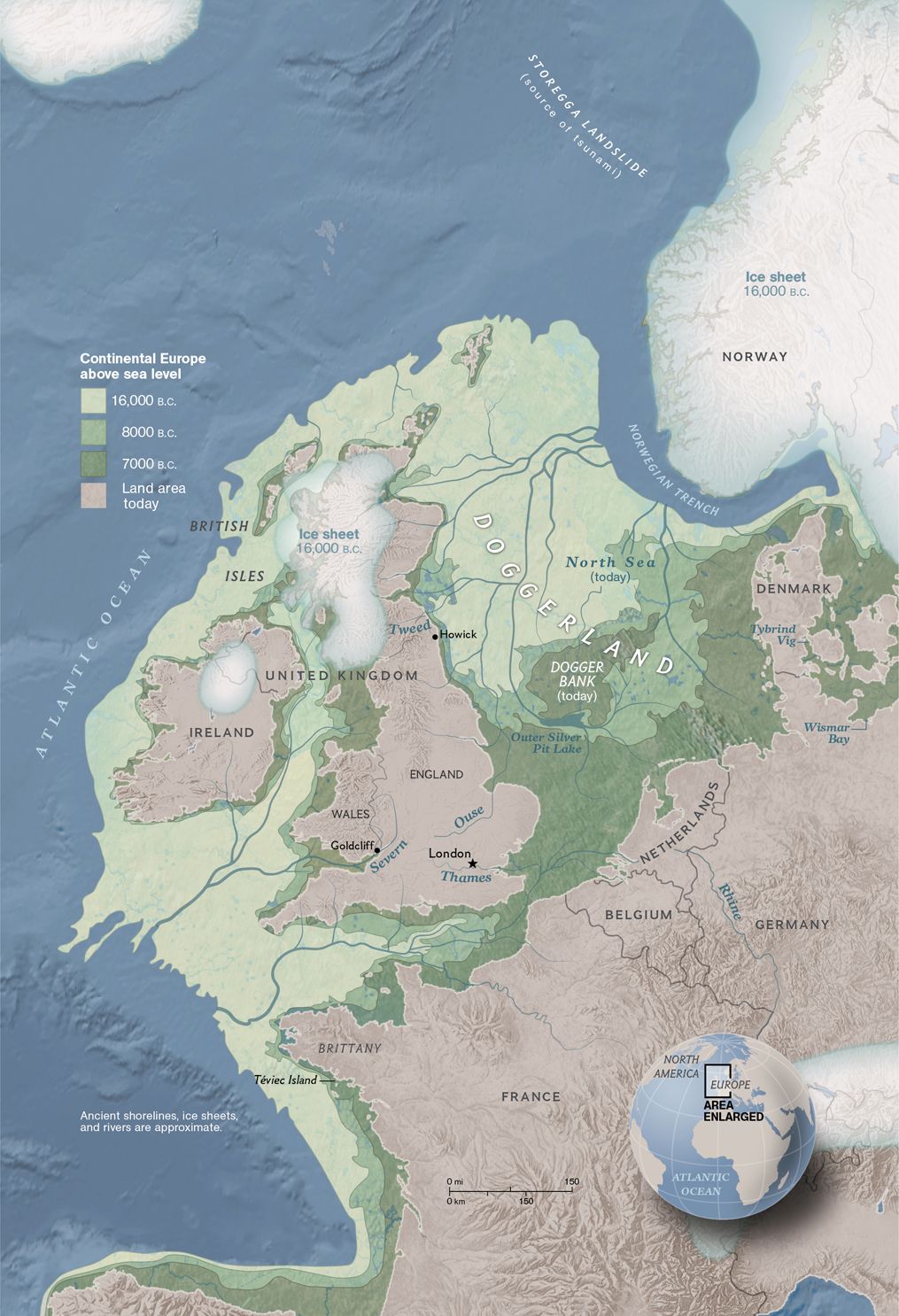A few (dozen?) nuclear warheads, at ~$100M a pop, if you believe Ewing and Donn's A Theory of Ice Ages from Science magazine.
Here are the steps to recreating Doggerland. As a bonus, Doggerland gets recreated as it existed before 16000 BC!
(Protip: buy land in northern Mexico, the Sahara, the Arabian Peninsula, or another similar place first.)
Detonate enough explosives north of Greenland and Ellsmere Island to detach the Arctic ice cap from its land-anchors. You'll want to do this in early September, as that's when Arctic sea ice is at its minimum extent. I don't have any clue how much megatonnage that requires, but the ice is only a few meters thick, albeit along a ~300 mi stretch.
Sit back for some scores of years, perhaps even a century. Ice sheets will have swelled across the Canadian shield, Scandanavia, Siberia. Sea levels will drop as all of that water is deposited in the form of miles-thick glaciers. How far? About as far as your diagram above. How do I know? 'Cause that's where the extraction of water from oceans and deposition onto ice sheets stopped last time.
In case you're skeptical--fair enough--here's the summary of Ewing and Donn's theory of what happens during step 2:
(2a) ice sheet detaches (because of global warming, historically, but we kick-started that), rotates freely and melts quickly.
(2b) Ice free arctic sea has moisture liberated (kinetically, not thermally) by polar easterlies much more rapidly off of choppy waves than off of snow/ice.
(2c) So it snows a lot across the Canadian shield, Scandanavia, Siberia.
(2c, continued) I said a lot: every day, feet per day; have you ever lived near lake-effect snow? Imagine that year-round, year after year.
(2d) Continuous water extraction from Arctic causes inflows through Bering Sea, Greenland Sea, and Baffin Bay. This water's warm, and keeps Arctic from freezing. (Extraction is also driving up salinity, keeping Arctic from freezing.) The extracted water falls as snow on glaciers, growing southward. (Any snow that falls on water melts, and is re-extracted. Heat of fusion ping-pongs back and forth, so the only extraction that matters is that which falls on land/glacier.)
(2d, continued) Extraction continues until sea levels drop enough for landbridges across Bering, Baffin, and Greenland Sea to reemerge. Arctic flash-freezes without warm replenishment.
(2e) Doggerland looks like it did during the last ice age. Unfortunately for me (because of the mile of ice on top of my home), so does the rest of the globe.

